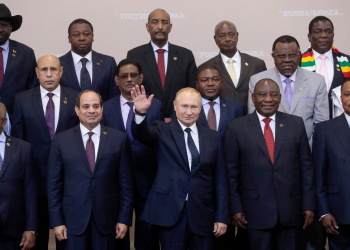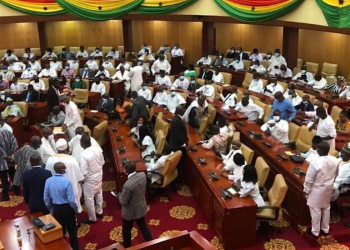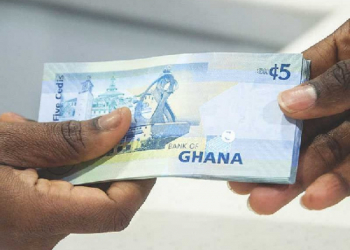Everywhere you look headlines scream #Stop Galamsey Now! But, if you have lived in a place in Ghana where ‘Galamsey’ (i.e. artisanal/small-scale gold mining) is immense, you have seen it all.
• Water bodies pollution; land and forest degradation;
• Livelihood impact and poverty due to lack of jobs;
• Health &safety risks e.g. risks associated with mining pitfalls, mercury pollution etc.
illegal mine galamsey destroy
Considering these systemic failures over several decades to:1)properly regulate the Galamsey industry; 2) efficiently manage the landscapes natural resources/ecosystem services and: 3)address the socio-economic concerns within the affected communities, could be construed as one of the greatest scandals and policy failures by state authorities (national; regional; municipalities), and traditional authorities(e.g. chiefs).
However, politicians, authorities and chiefs financing Galamsey have blurred the lines between illegal mining and environmental pollution/degradation via bribery and personal interests. Yet, there is no clear coherent policy framework and strategy for the future management of current and potential Galamsey/small-scale mining sites (i.e. in addressing the various land-use desires and multi-party disputes).
The ‘good news’ is that there seem to be growing positive public pressure via mainstream and social media campaigns; government ministers; high profile personalities and several organisations addressing the negative impacts and pressing to halt Galamsey operations in its tracks. The plethora to ‘#Stop Galamsey Now’ in Ghana signals that the new government’s objective to tackle this environmental carnage could be real and genuine. Various ministries including land and forestry; environment and science; water and natural resources, are all stepping up to the call. How the authorities and decision-makers approach and address the competing, incompatible goals pursued by the various actors and interest groups remains a critical land-use policy and governance challenge. Notably, the myriad of conflicting goals and interests cutting across: gold production vs. water resource management; gold production vs. forests as carbon sinks and timber production; gold production vs. job creation/meeting economic demands; chiefs vs. lucrative deals from both internal/external investors; politicians vs. Galamsey/illegal miners’ votes etc. Now, the question is no longer the‘regulatory and moratorium rhetoric on Galamsey operation’ (which may not work in the long run), but how best to execute it, in particular, the creative design of policy instruments being consistent and coherent with the government’s sustainable development agenda/goals (SDGs).
Considering the burgeoning issues and tensions, balancing the multiple socio-economic and environmental interests remains vital.This brief presents three strategic pathways that could become useful to tackle the challenges.The pathways should not be seen as ‘blueprints’ but as future-oriented strategic perspectives to stimulate win-win discussions on the Galamsey vs.
environmental protection discourse.
Pathway 1: An Integrated Land-Use Planning Approach
Although there is no quick fix in tackling land-use conflicts, approaching this conflict situation should be strategic. The societal conflicting demands present an opportunity for authorities to engage with various stakeholder groups, including illegal miners’ representatives, chiefs, minerals commission, experts etc., integrated planning to find consensus and establishing integrated planning approach has the potential to scale-up the various ecosystem services within these landscapes into programs that could benefit both the environment and society.
This pathway ensures that all interested parties, big or small, come together to make decisions about how the land and its resources are managed in a sustainable fashion.Achieving this requires an ad hoc multi-trans-disciplinary working group focusing on the drivers and barriers influencing small–scale mining and towards establishing trade-offs and synergies. Importantly, an integrated planning approach will remain crucial, since power imbalance and implementing a blanket moratorium on Galamsey/small-scale mining can become counter-productive.For instance, the potential to increase covert ways to explore minerals due to lack of jobs and adding to other societal issues such as youth unemployment, prostitution, crime and armed robbery.
To note, the idea of sustainable development is woven into this concept, and mechanisms highlight the inclusion of socio-economic aspects via multi stakeholder participation.
Pathway 2: Selection of Appropriate Policy Instruments
States are often required to intervene with policy instruments to mitigate and balance societal demands regarding competing land-use interests. In this conflict, the design and selection of policy instruments, may consider the landscapes ecosystem service characteristics; stakeholders involved in the conflict; existing legal/policy frameworks and account for the ecological and socio-economic conditions.It is useful to consider that ‘conservation practices should not become barriers to socio-economic development. Consequently, the selection of policy instruments should not solely focus on environmental regulatory measures without accounting for the potential socio-economic impacts e.g. possible job losses.
Going forward, a mix of novel policy instruments may consider:regulatory and enforcement measures; education and information campaigns; research;incentivizing clean technology; partnerships with mainstream regulated mining companies;environmental pollution taxes and penalties; subsidies/funding opportunities available for illegal-miners to enter into agricultural and forestry programmes e.g. planting high-energy crops, palm-oil production and considering schemes such as the payment for ecosystem services (PES) concept.
It is clear that these landscapes are ‘ecosystem services rich’ e.g. for water functions and forests carbon sequestration potential. Thus, applicable forests and river bodies’ sites could be mapped and valued under emerging PES schemes and projects offered by national and major international organisations. For example, since Ghana is a ‘REED country’, potential landscapes can be managed through schemes to reduce emissions from deforestation and forest degradation (REDD) and the role of conservation and enhancement of forest carbon stocks in developing countries (REDD+). Such schemes and projects will create new frontiers to improve living standards, whilst protecting forests and water bodies within these landscapes.
In this pathway, the new government’s ‘one district one factory concept’ may as well present a ‘novel sustainability policy tweak’ to streamline Galamsey into a new management paradigm following the objectives of environmental protection by law.To sum up, it is now vitally important for appropriate policy instruments to be practical; effective; designed through due processes of law and must be fair.
Pathway 3: Sustainability Assessment & Policy Integration
This pathway starts with the recognition that environmental impact assessments and conflict mediation processes present direct focus on decisions, and builds relationships amongst stakeholders. Hence, this pathway aims to reinforce decision making tools such as Strategic Environmental Assessment and Sustainability Assessment techniques, since it allows joint trade-offs, explore synergies between individual policies/projects and help evaluate alternative futures in a more comprehensive manner. Additionally, utilising a policy integration approach will result in a joint policy, addressing different interests and cross-cutting issues, in particular, the protection of water bodies; job creation; maintenance of forests and delivering other ecosystem services. It is important that experts are involved in “feeding” into potential policy development process (es) and outcomes.
Bringing it all together
The Galamsey discourse has shown that Ghana needs more of these types of holistic, coherent policy reforms. It is obvious that formal bottom-up decision-making, with a future-oriented lens would be required to develop more robust policies to benefit the current and future generations.
However, since the Galamsey issues have both environmental and socio-economic implications, assessment of the impacts of planned actions should not consider only the environmental/ecological factors but also the socio-economic consequences.In other words, the ecological and socio-economic interests should not be considered in isolation.
Finally, in order to achieve win-win situations, the pathways suggest that decision–makers must involve relevant interest groups in developing and implementing creative effective policy mix. This including regulation, education and information, financial schemes/subsidies, and together with ban on specific Galamsey mining practices that clearly by law and without doubt conflict with environmental protection objectives. With Agenda 2030 SGDs in mind, this piece has aimed to provide a model for robust policy formulations in addressing similar land-use challenges/conflicts in an African and international context.
Join GhanaStar.com to receive daily email alerts of breaking news in Ghana. GhanaStar.com is your source for all Ghana News. Get the latest Ghana news, breaking news, sports, politics, entertainment and more about Ghana, Africa and beyond.




